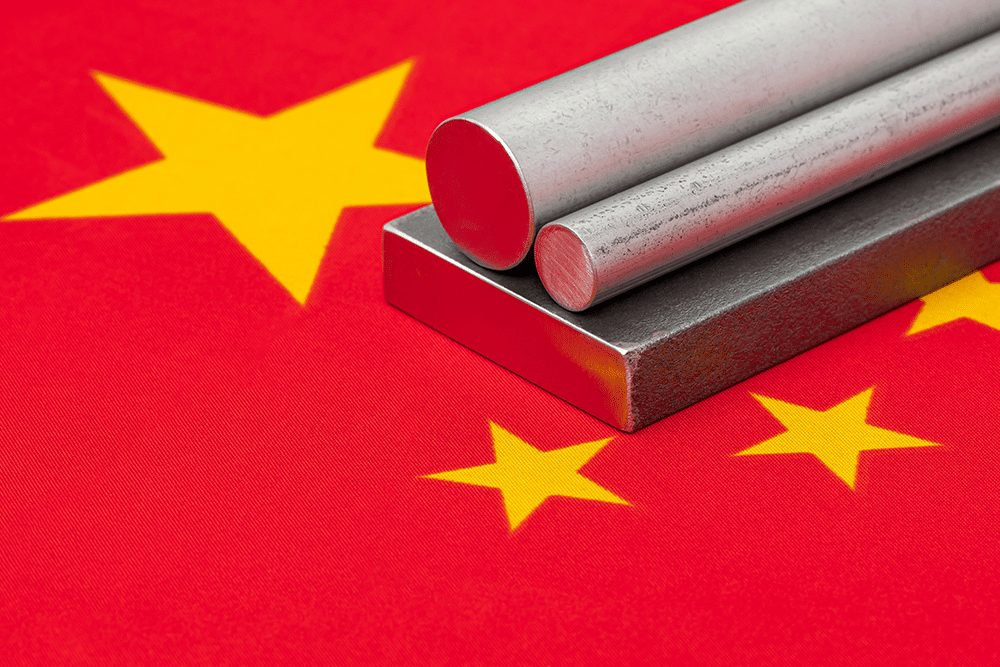The Aluminum Monthly Metals Index (MMI) continued to drop, with a 5.14% decline from July to August.
The price of aluminum continued to deflate before finding a bottom at the close of July. Overall, aluminum prices witnessed a 9.07% decline throughout the month, followed by a modest 2.26% rise during the first half of August.
Gain access to expert-driven aluminum market insights, ensuring your company is well-informed and prepared to tackle falling demand. Opt into MetalMiner’s free weekly newsletter.
High Chinese Aluminum Supply Offers Bearish Risk
Aluminum prices appeared to stabilize during August, although risks remain to the downside. For instance, global inventory levels remain relatively well-stocked. While LME stocks continued to slide in recent months, their overall volume remains near multi-year highs.
Meanwhile, market contango, with LME futures continuing to carry a historically wide premium over spot prices, suggests the spot market shows no supply constraints. In fact, the delta between the two price points has trended higher during the first half of Q3, at roughly $55/mt. (To learn how to grapple with changes in the price of aluminum read our free resource The Art of Timing Your Metal Buy).
In Q2, the average was just $44/mt. For reference, futures carry an average $22/mt premium over primary cash, and have since 2012.
Despite the ramp-up in protectionist measures in the West, Chinese overcapacity continued to shape the global supply landscape. According to the International Aluminum Institute, primary aluminum production in China has continued to rise from previous years. H1 2024 saw a more than 5% increase from H1 2023.
China’s 2024 Output Resilient, But Global Supply Remains Unscathed
While China’s dry season saw a slight pullback in output earlier in the year, monthly volumes continued to surpass previous years’ totals. That said, production in China’s hydro-rich Yunnan province remains sensitive to weather patterns. However, as 2024 avoided a drought, output cuts proved relatively modest and too limited to curtail global supply substantially.
China Exports Deflation as Economy Disappoints
Amid the West’s turn to protectionism, China’s lingering economic weakness continues to push much of its aluminum supply to the global marketplace. U.S. tariffs thus far have done little to stem import volumes from China, which witnessed a pickup during H1 2024. China remains America’s third largest metal supplier, only surpassed by the UAE and Canada.
China has few options other than to lean on the export market. While it continues to build out renewable energy infrastructure and EVs at a strong pace, the ongoing decline of its property sector continues to limit demand for downstream products that require aluminum.
Meanwhile, Chinese consumers continue to demonstrate a tepid purchasing appetite amid economic uncertainty. Therefore, to maintain its GDP growth, China must seek demand elsewhere. This has translated to record volumes of cargo shipments from China to the U.S. and Europe. Although some believe the unraveling of U.S. rate hikes could free China to substantially increase stimulus measures, that appears unlikely.
Many analysts also speculated that the conclusion of China’s Third Plenum in July would also spur stimulus, only to find themselves disappointed by what proved to be a modest and inconsequential rate hike that has done little to change the economic outlook.
Canada Eyes Tariffs Amid Protection Fight
China’s impact on the global aluminum market extends far beyond the U.S., as its comparatively lower prices remain a competitive advantage. For instance, Canada’s aluminum and steel industry has started to put increasing pressure on the government to follow the U.S. and Mexico in their ramp-up of tariffs.

Industry leaders noted an “existential threat” should Canada not put roadblocks on Chinese supply. As the leading aluminum supplier to the U.S., what happens in Canada invariably impacts the domestic market. This has led to calls for Canada to impose a 25% tariff on both steel and aluminum products melted and poured in China.
Increased tariffs, especially from Canada, could help mitigate the impact of overcapacity in China on Western markets. However, it is worth noting that China will likely look for ongoing loopholes to maintain export demand. These monthly aluminum macroeconomic market indicators are all covered monthly in MetalMiner’s free Monthly Metals Index report.
Investment Funds Drop Long Bets, Pick Up Short
China’s role continues to leave a bearish aftertaste for markets like aluminum. Even considering the recent rise in prices, the unraveling of Q2’s speculative rally recently pushed prices back within their 2023 sideways range as markets continue to reassess demand forecasts.
While a strong uptick in long positions from investment funds spurred last quarter’s rally, their positioning today sharply contrasts with where they stood only a few months ago. Not only have funds dropped almost all of their long bets accumulated over recent months, but they also started to pile on short bets, enough to almost eliminate the net long bias that materialized in mid-March.
Investment fund positioning remains a consequential component when it comes to the price of aluminum and its direction. This is mainly due to their outsized positions relative to those of other investors. The shift in their current sentiment suggests they have given up expectations of a rebound in the short term, making it difficult for aluminum prices to increase meaningfully from where they stand today.
Biggest Aluminum Price Moves
Visually see where 2025 aluminum costs are projected to land with MetalMiner Insights’ comprehensive short and long-term price forecasts. Talk with us.
- European 5083 aluminum plate prices fell 2.71% to $4,623 per metric ton as of August 1.
- Chinese aluminum primary cash prices remained bearish, with a 4.04% fall to $2,655 per metric ton.
- European commercial 1050 aluminum sheet prices declined by 4.22% to $3,143 per metric ton.
- Chinese billet prices saw their decline accelerate with a 5.08% drop to $2,867 per metric ton.
- Indian aluminum prices witnessed the largest decline of the overall index, with a 9.33% drop to $2.54 per kilogram.



_for_SOCIAL.jpg)
